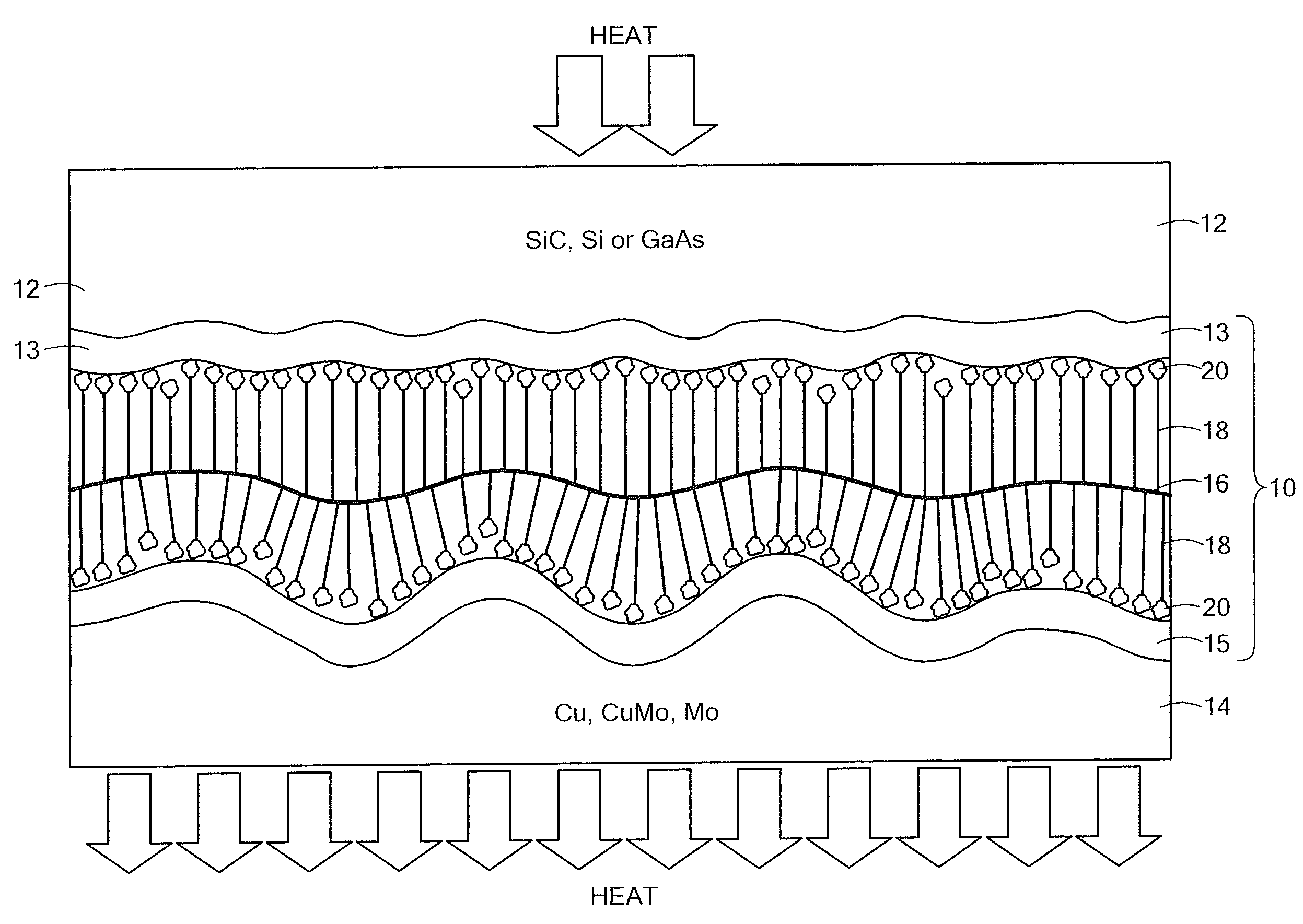Nano-tube thermal interface structure
- Summary
- Abstract
- Description
- Claims
- Application Information
AI Technical Summary
Benefits of technology
Problems solved by technology
Method used
Image
Examples
Embodiment Construction
Referring to FIG. 1, a structure 10 is used to transport heat generated in a heat source 12, here a monolithic microwave integrated circuit (MMIC) 12 having a metal ground plane conductor layer 13, here a thermally and electrically conductive material such as, for example, Ti / Au or W / Au, on the bottom surface of the chip 12 to a conductive layer 15, here for example, of the same material as the layer 13, on the upper surface of a heat sink 14. The structure 10 includes a electrically and thermally conductive carrier layer 16 having high lateral thermal spreading properties (such as copper or aluminum; here preferably graphene or graphene-based materials such as pure graphene films, interwoven-CNT films and exfoliated graphite papers). The carrier layer 16 has directly grown on upper and lower surfaces thereof a plurality of generally vertically extending the hollow nano-tubes 18 here using microwave plasma chemical vapor deposition or thermal chemical vapor deposition.
The nano-tubes...
PUM
 Login to View More
Login to View More Abstract
Description
Claims
Application Information
 Login to View More
Login to View More - R&D
- Intellectual Property
- Life Sciences
- Materials
- Tech Scout
- Unparalleled Data Quality
- Higher Quality Content
- 60% Fewer Hallucinations
Browse by: Latest US Patents, China's latest patents, Technical Efficacy Thesaurus, Application Domain, Technology Topic, Popular Technical Reports.
© 2025 PatSnap. All rights reserved.Legal|Privacy policy|Modern Slavery Act Transparency Statement|Sitemap|About US| Contact US: help@patsnap.com



